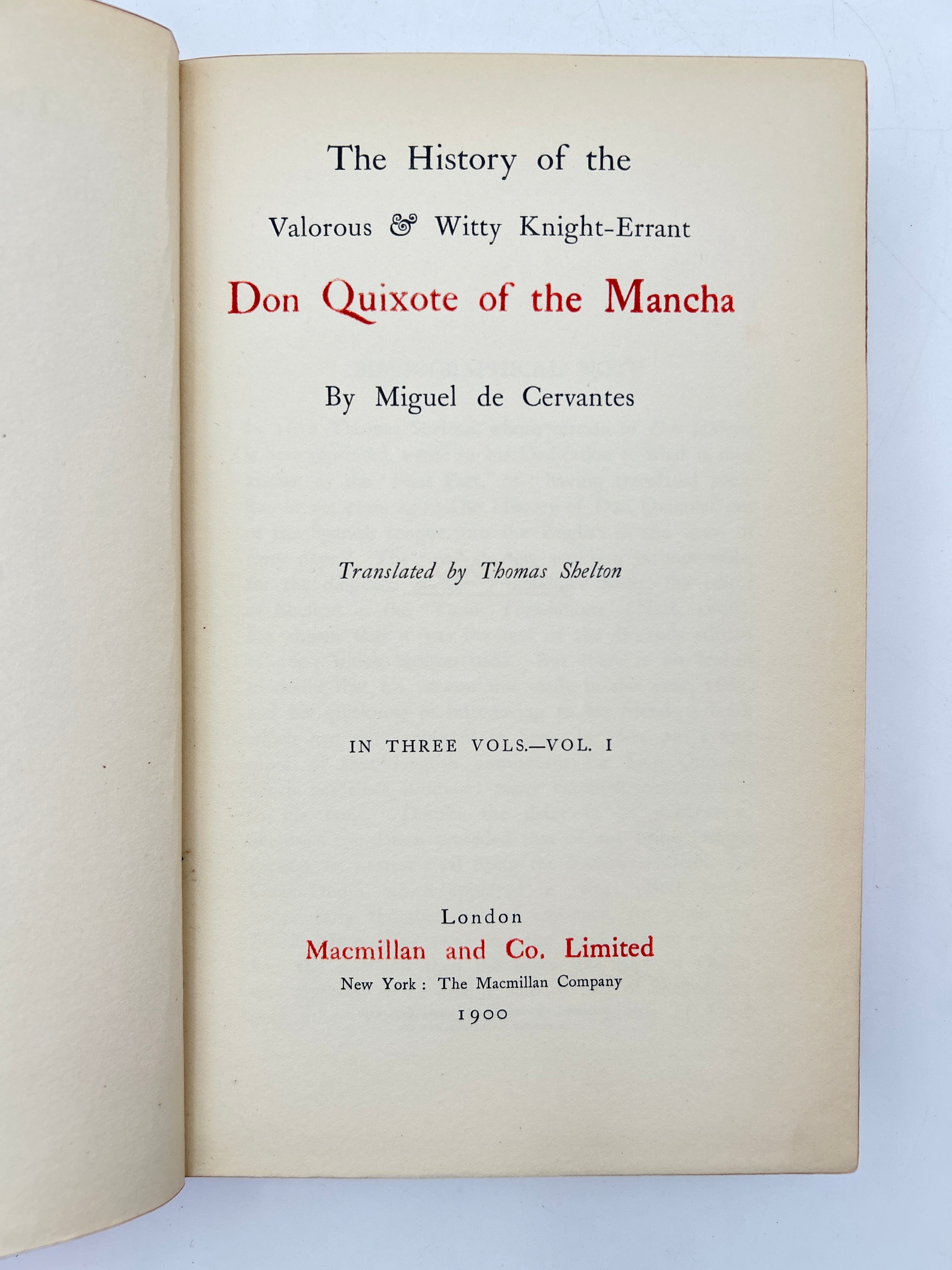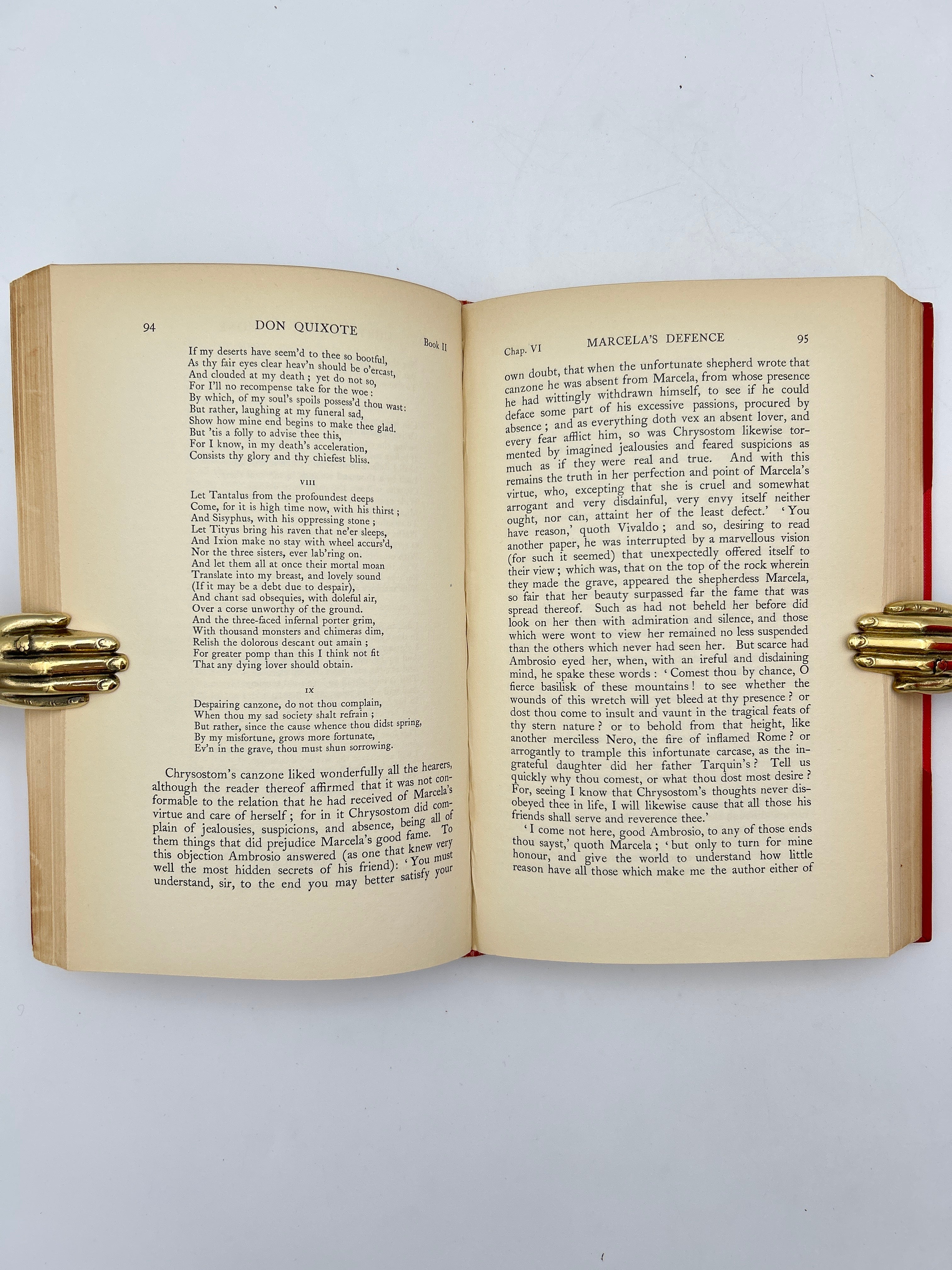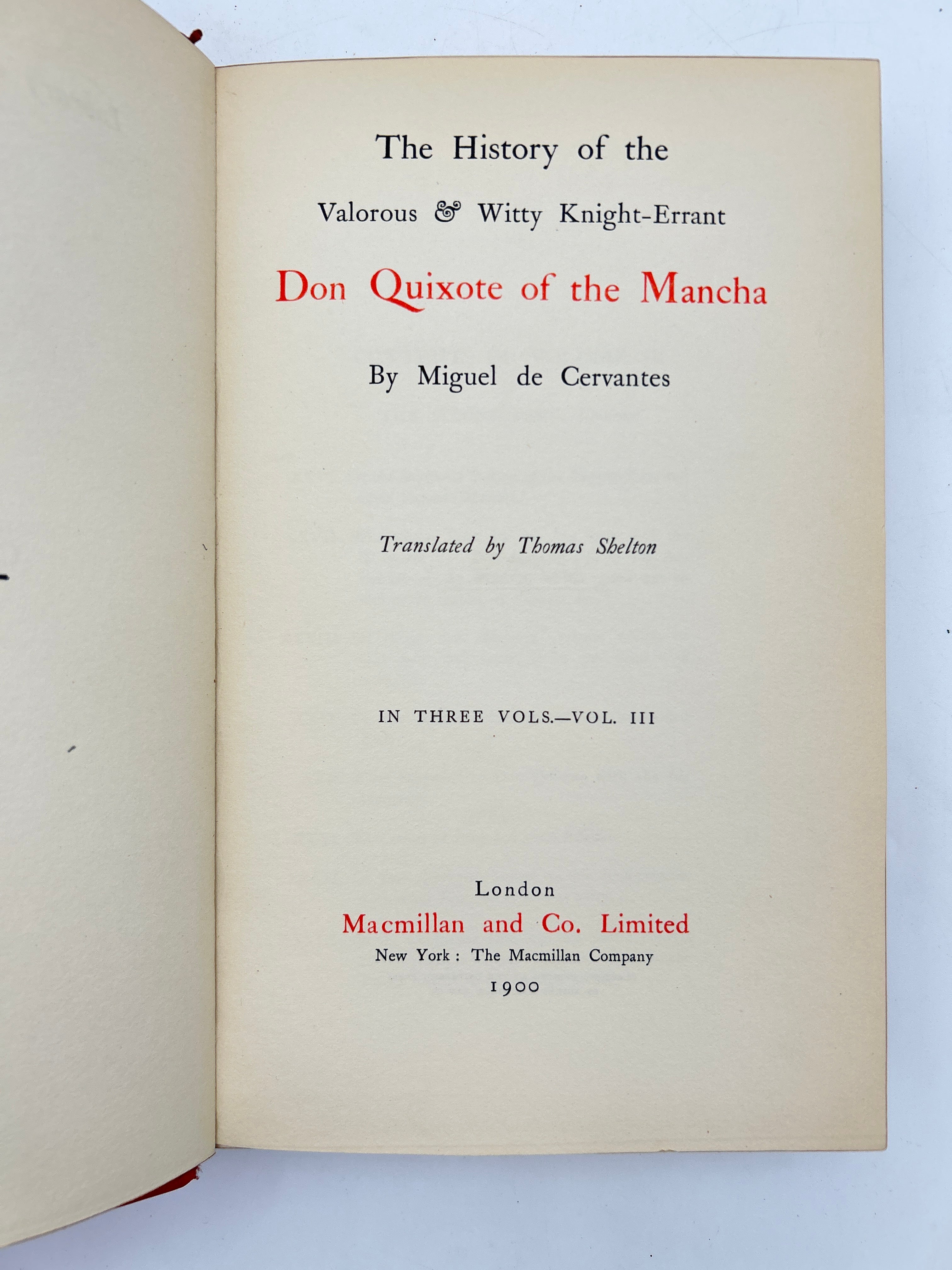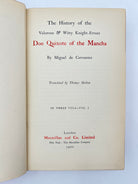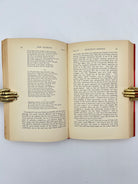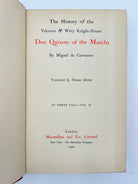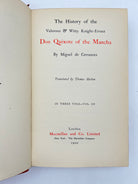Don Quixote of the Mancha in Three Volumes
Couldn't load pickup availability
5b Miguel de Cervantes. Translated by Thomas Shelton. London: Macmillan and Co., 1900.
Notes
Don Quixote by Miguel de Cervantes is a satirical yet deeply human tale about an aging gentleman, Alonso Quixano, who becomes so enamored with chivalric romances that he renames himself Don Quixote de la Mancha and sets out to revive knighthood in a modern world that has long left it behind. Accompanied by his loyal yet skeptical squire, Sancho Panza, Quixote mistakes windmills for giants and inns for castles, embarking on a series of misadventures that blur the line between reality and imagination. Beneath the humor and absurdity lies a profound exploration of idealism, madness, and the power of belief, as Cervantes contrasts Quixote’s noble delusions with the cynicism of the world around him.
Miguel de Cervantes Saavedra (1547–1616), a Spanish novelist, soldier, and poet, began writing Don Quixote during a period of financial hardship and political instability in early 17th-century Spain. The first part was published in 1605 and the second in 1615, creating what is often called the first modern novel. Cervantes drew inspiration from the popular chivalric romances of his day, parodying their extravagance while using his story to comment on human folly, social change, and the decline of idealism in a pragmatic world. Having endured years as a captive in Algiers and faced poverty throughout his life, Cervantes infused Don Quixote with both biting wit and deep empathy, making it one of the most influential works in Western literature.
Description
Red leather three quarter binding with red canvas boards. Black and red spine with gilt lettering and ornamentation to spine. Rubbing to extremities.

